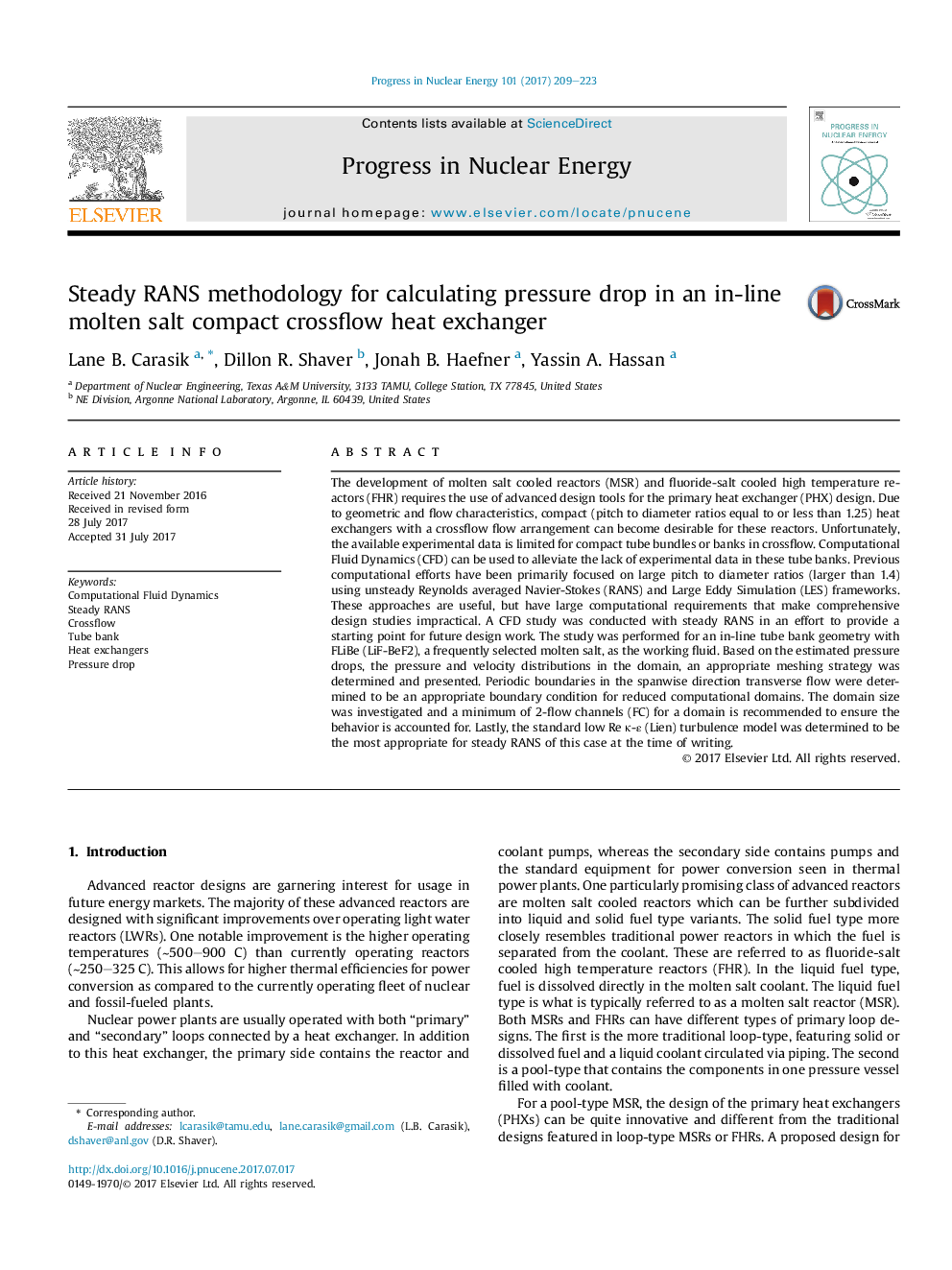| کد مقاله | کد نشریه | سال انتشار | مقاله انگلیسی | نسخه تمام متن |
|---|---|---|---|---|
| 5478005 | 1521737 | 2017 | 15 صفحه PDF | دانلود رایگان |
عنوان انگلیسی مقاله ISI
Steady RANS methodology for calculating pressure drop in an in-line molten salt compact crossflow heat exchanger
دانلود مقاله + سفارش ترجمه
دانلود مقاله ISI انگلیسی
رایگان برای ایرانیان
کلمات کلیدی
موضوعات مرتبط
مهندسی و علوم پایه
مهندسی انرژی
مهندسی انرژی و فناوری های برق
پیش نمایش صفحه اول مقاله

چکیده انگلیسی
The development of molten salt cooled reactors (MSR) and fluoride-salt cooled high temperature reactors (FHR) requires the use of advanced design tools for the primary heat exchanger (PHX) design. Due to geometric and flow characteristics, compact (pitch to diameter ratios equal to or less than 1.25) heat exchangers with a crossflow flow arrangement can become desirable for these reactors. Unfortunately, the available experimental data is limited for compact tube bundles or banks in crossflow. Computational Fluid Dynamics (CFD) can be used to alleviate the lack of experimental data in these tube banks. Previous computational efforts have been primarily focused on large pitch to diameter ratios (larger than 1.4) using unsteady Reynolds averaged Navier-Stokes (RANS) and Large Eddy Simulation (LES) frameworks. These approaches are useful, but have large computational requirements that make comprehensive design studies impractical. A CFD study was conducted with steady RANS in an effort to provide a starting point for future design work. The study was performed for an in-line tube bank geometry with FLiBe (LiF-BeF2), a frequently selected molten salt, as the working fluid. Based on the estimated pressure drops, the pressure and velocity distributions in the domain, an appropriate meshing strategy was determined and presented. Periodic boundaries in the spanwise direction transverse flow were determined to be an appropriate boundary condition for reduced computational domains. The domain size was investigated and a minimum of 2-flow channels (FC) for a domain is recommended to ensure the behavior is accounted for. Lastly, the standard low Re κ-ε (Lien) turbulence model was determined to be the most appropriate for steady RANS of this case at the time of writing.
ناشر
Database: Elsevier - ScienceDirect (ساینس دایرکت)
Journal: Progress in Nuclear Energy - Volume 101, Part B, November 2017, Pages 209-223
Journal: Progress in Nuclear Energy - Volume 101, Part B, November 2017, Pages 209-223
نویسندگان
Lane B. Carasik, Dillon R. Shaver, Jonah B. Haefner, Yassin A. Hassan,